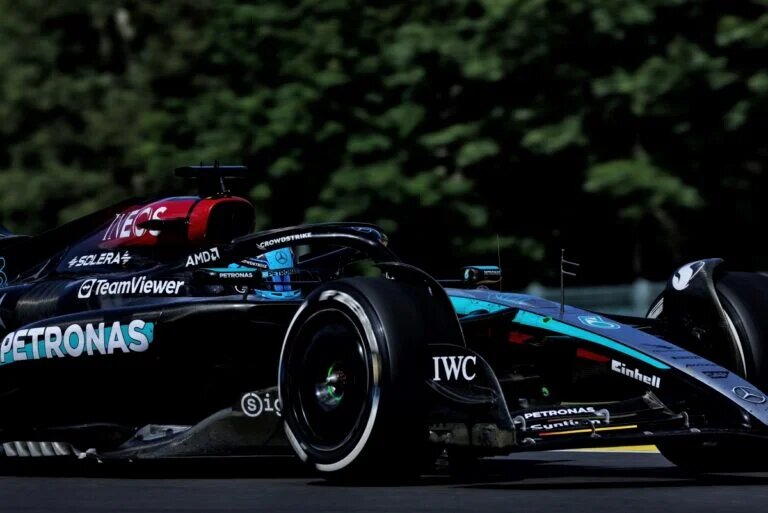Mercedes believes that George Russell’s W15’s plank wear was a factor in his car’s underweight finish and subsequent loss of the Belgian Grand Prix championship.

Mercedes admitted to a calculation error after initial theories suggested that increased tire wear with one fewer pit stop could have been sufficient to explain the missing deficit. Russell, however, executed an ambitious one-stop race at Spa-Francorchamps to overtake team-mate Lewis Hamilton and lead a Mercedes 1-2 in the final race before the shutdown. However, post-race scrutineering checks found Russell’s car to weigh 1.5 kilograms below the FIA’s 798kg minimum weight limit, granting him an inevitable exclusion.
Though initial assessments imply that plank wear and perhaps Russell’s own weight loss were possibly factors, the marque has now doubled down on that assertion.
“Especially after he’d driven such a strong race to win from so far back, it’s very disappointing and unfortunate,” Mercedes Trackside Engineering Director Andrew Shovlin remarked.
“Right now we’re trying to understand exactly what happened.
“A lot of that involves us getting the weights of all the different components. Throughout a race, the car may shed a significant amount of weight.
You receive oil consumption, brake wear, plank wear, and tire wear. George lost a significant amount of weight in this specific race, as can happen to drivers.
Given that Russell and Hamilton’s cars had the same weight before the race, according to Shovlin, Mercedes had no reason to think that such a scenario might occur.
He revealed, “Now, the cars started the race the same weight.” Following qualifying, Lewis and George were weighed, and the cars came in within 500 grams.
George’s was the only vehicle with the issue, and that’s because factors like tire wear were far more. On the plank, it appears that we lost additional material.
ike one or two kilos, they don’t amount to a lot of lap time.”
